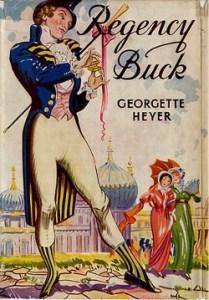 Welcome to British Isles Friday! British Isles Friday is a weekly event for sharing all things British and Irish - reviews, photos, opinions, trip reports, guides, links, resources, personal stories, interviews, and research posts. Join us each Friday to link your British and Irish themed content and to see what others have to share. The link list is at the bottom of this post. Pour a cup of tea or lift a pint and join our link party!
Welcome to British Isles Friday! British Isles Friday is a weekly event for sharing all things British and Irish - reviews, photos, opinions, trip reports, guides, links, resources, personal stories, interviews, and research posts. Join us each Friday to link your British and Irish themed content and to see what others have to share. The link list is at the bottom of this post. Pour a cup of tea or lift a pint and join our link party!
Last week, I posted a couple of random thoughts about the royal family. Tina reviewed He Said/ She Said by Erin Kelly (and includes a cute picture of her dog!).
Next week, on January 29, will be the 200th anniversary of the death of King George III, ending the historical period known as The Regency.
In the US, King George III is the despot to whom we addressed our declaration of independence.
The history of the present King of Great Britain is a history of repeated injuries and usurpations, all having in direct object the establishment of an absolute Tyranny over these States.
That assertion was followed by a long list of grievances.
George III had a long reign that included military victories as well as losses - most notably the Seven Years' War and the defeat of Napoleon.
George III's reigned over the beginning of the Industrial Revolution. The king was intrigued by scientific instrumentation and discovery. One of our favorite exhibits at the Science Museum in London was King George III's collection of models.
When King George III became ill in 1811 (blind from cataracts, in pain from rheumatism, and demented from one of a number of possibilities), his eldest son took over his duties, serving as Prince Regent. The period from 1811 to death of George III on January 29, 1820, is known as The Regency. Sometimes, the Regency era is defined as longer - from the mid-1790s through the rest of the Hanover kings (George IV followed by his brother, William IV) to the beginning of Queen Victoria's reign in 1837, which began the Victorian era.
The Regency is famous for grand balls and pretty manners, fabulous works of architecture, and an underbelly of squalor due to changes in agriculture and industry that benefited some but reduced others to poverty.
To book lovers, of course, the Regency is the era when Jane Austen lived and wrote. Sense and Sensibility, her first published novel, appeared in 1811. Northanger Abbey and Persuasion were published posthumously in 1818. Her entire career fits neatly in the Regency.

Georgette Heyer was inspired by Jane Austen when she invented the Regency Romance in 1935, with historical details and a distinctive voice. Heyer's success inspired many other authors, making the Traditional Regency a popular sub-genre of romance novels from the 1960s into the 1990s.
I started reading romances around 1990, about the time that some authors were crossing over from Traditional Regency to the longer-form historical romance, which they set in the Regency period. I still read books by Mary Balogh and Mary Jo Putney. The historical romance often incorporates more of the geopolitical situation and the darker side of life. The heroines are independent thinkers and bold actors. Granting they are anachronisms, I still enjoy living a bit of early 19th-century life through these women.
The Regency period ended 200 years ago, next week. It's startling how big those nine years loom in the historical landscape. Are you a fan of the Regency period?

About Joy Weese Moll
a librarian writing about books
